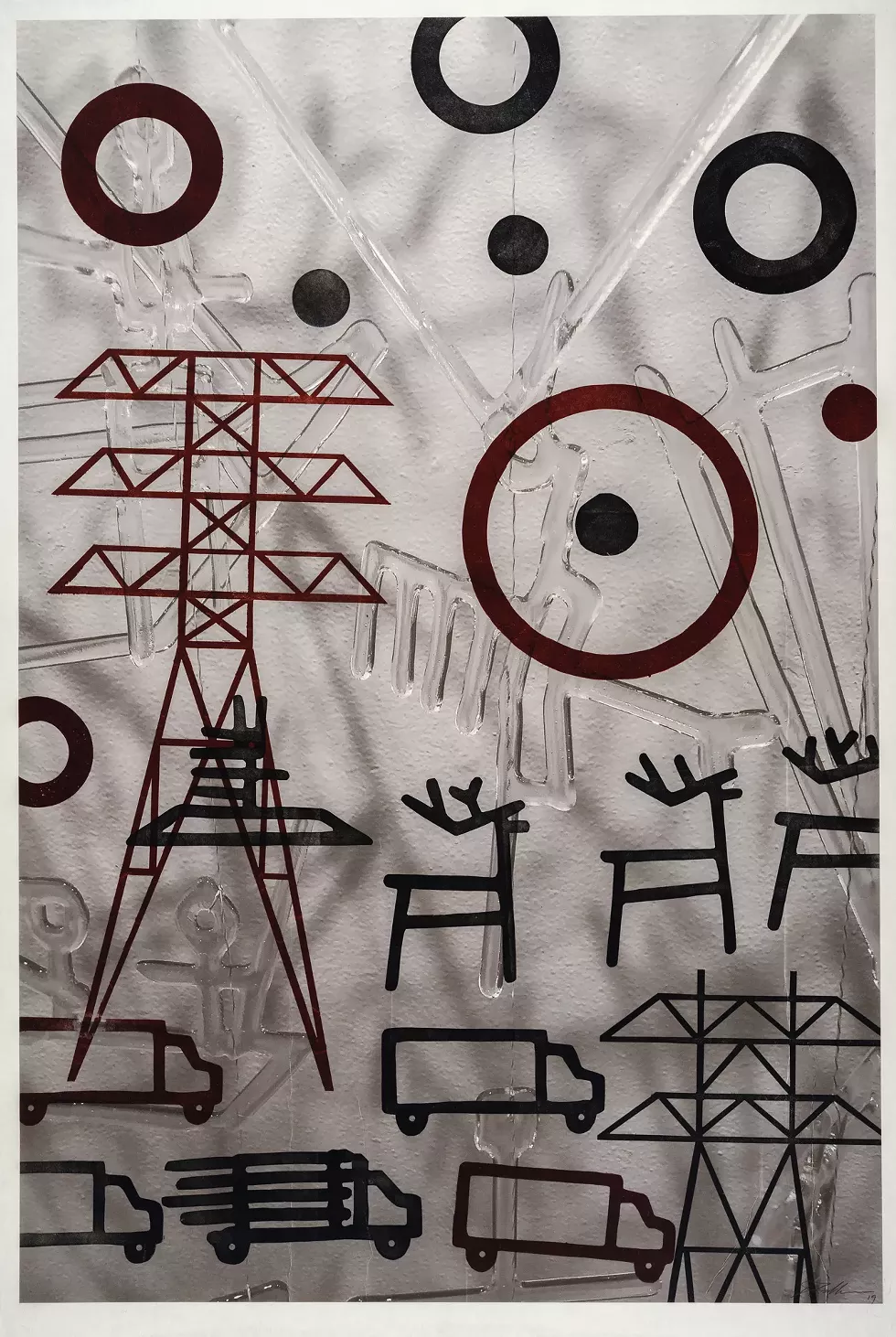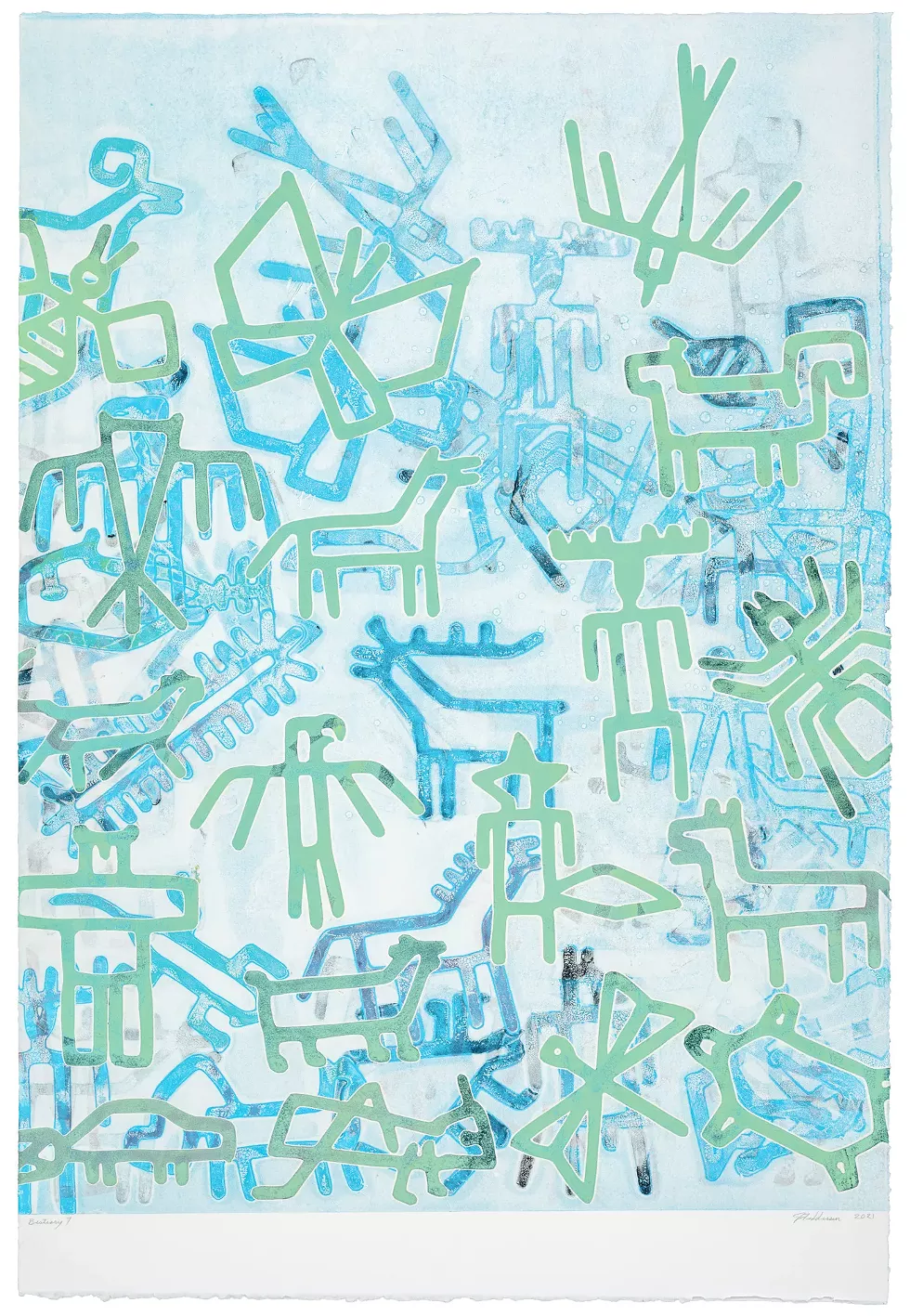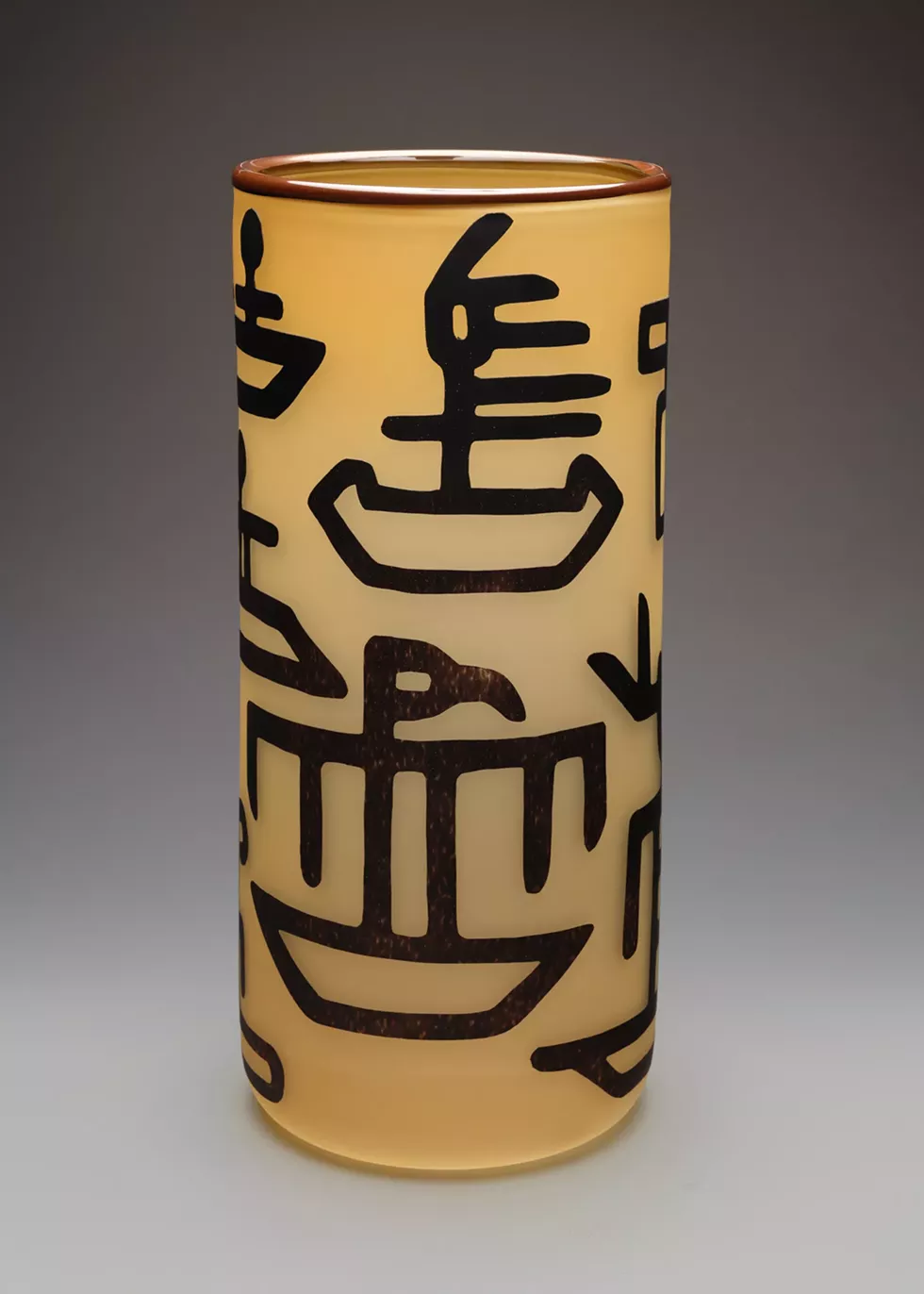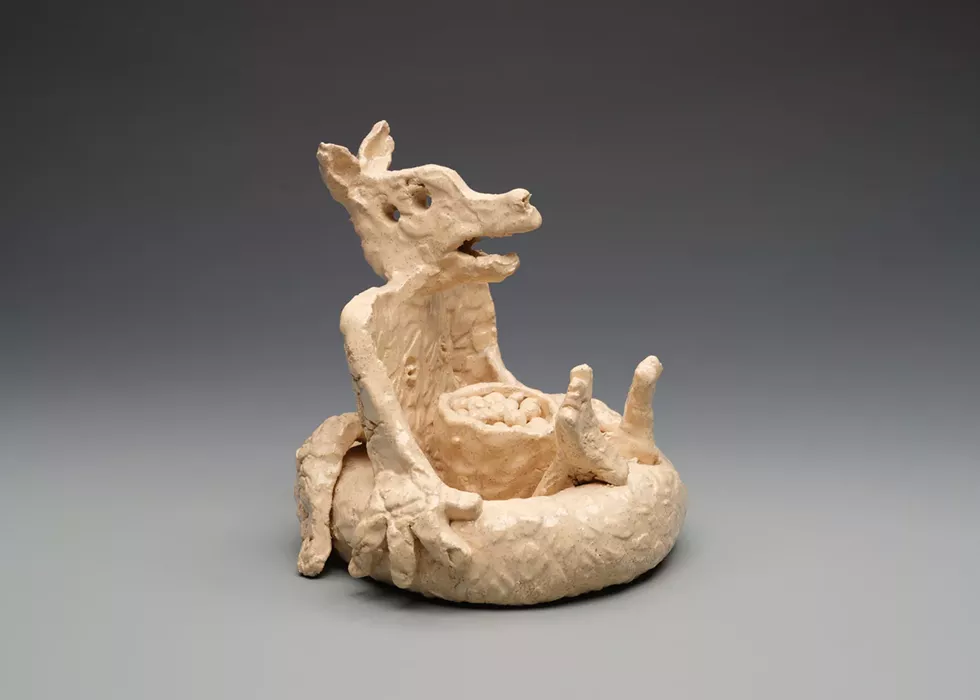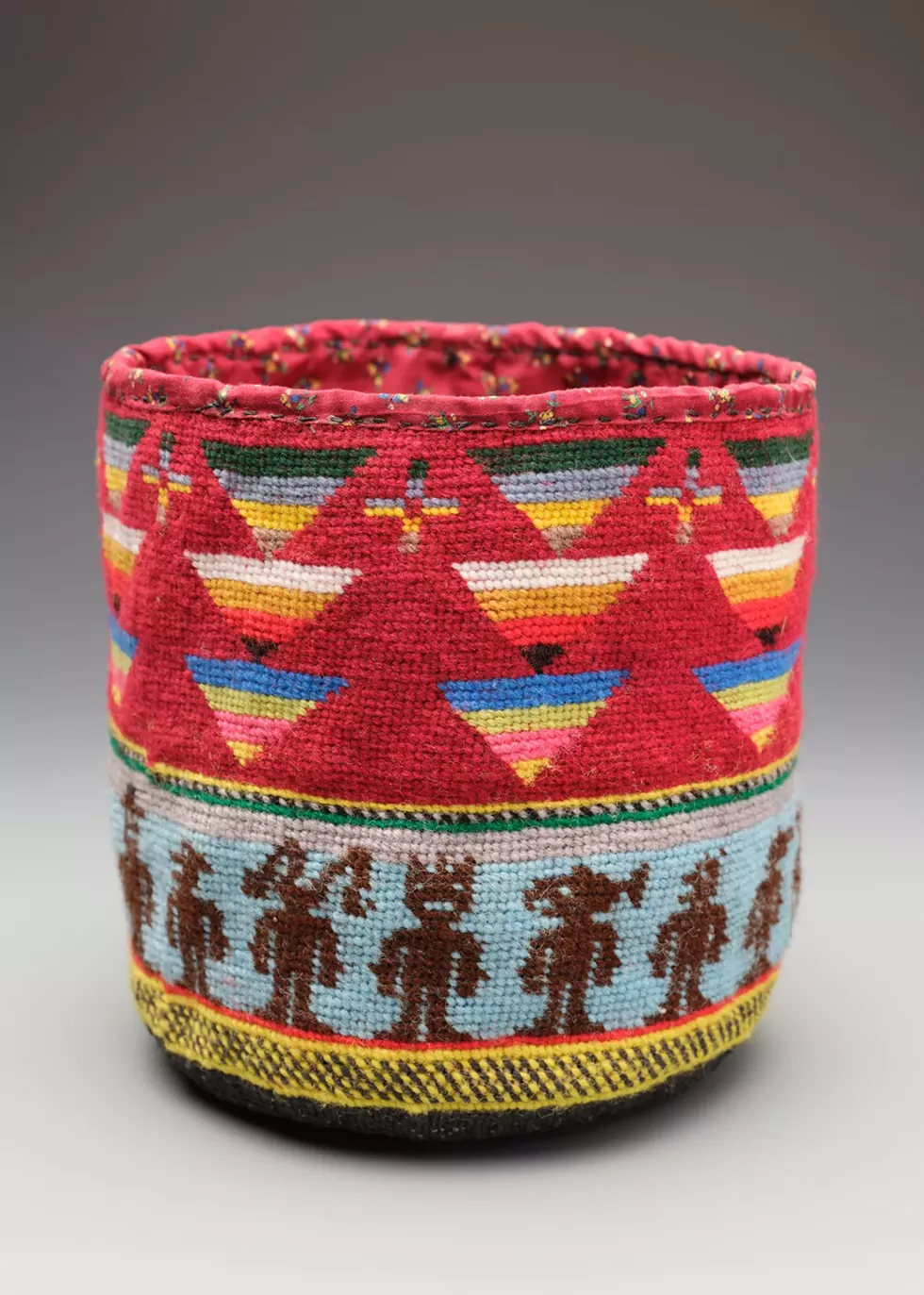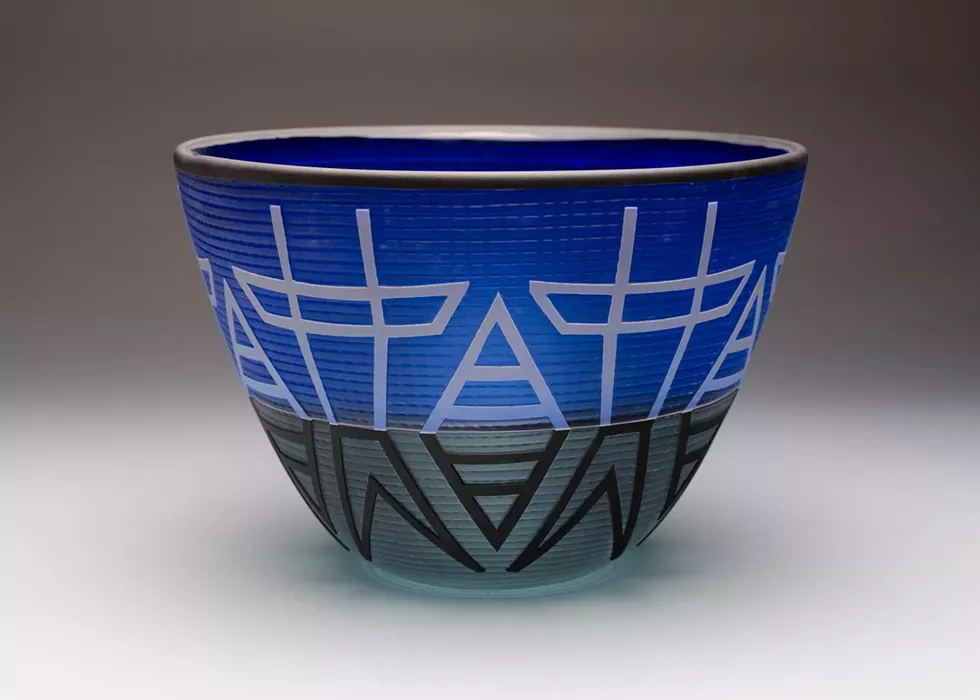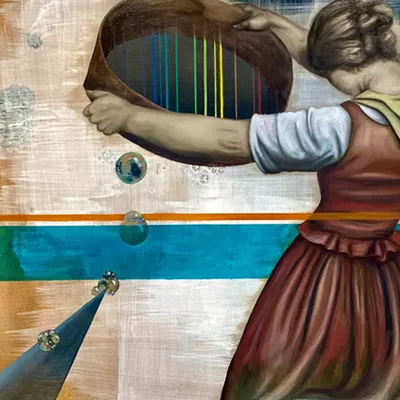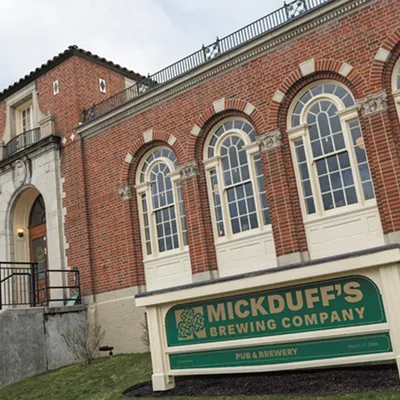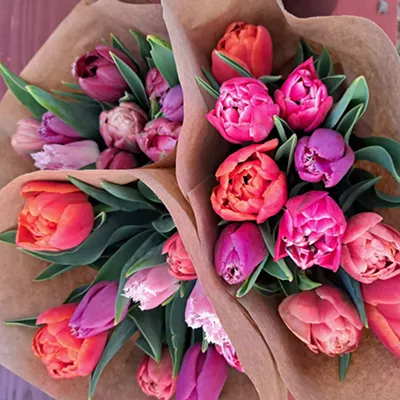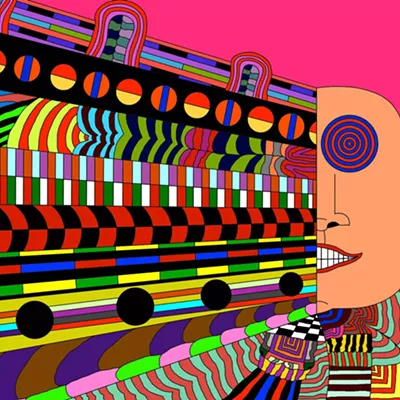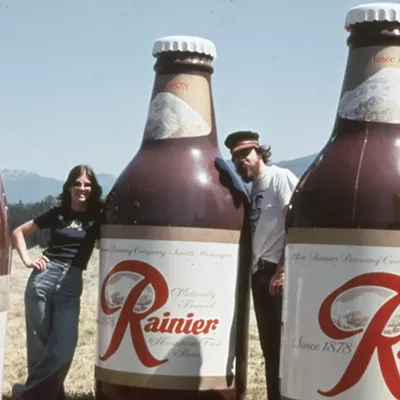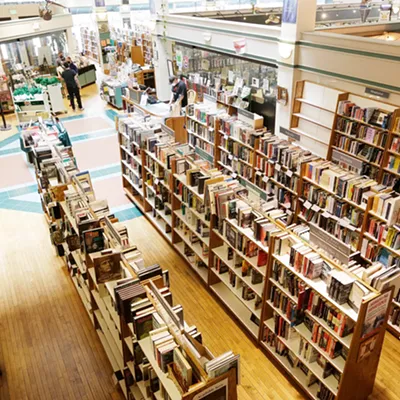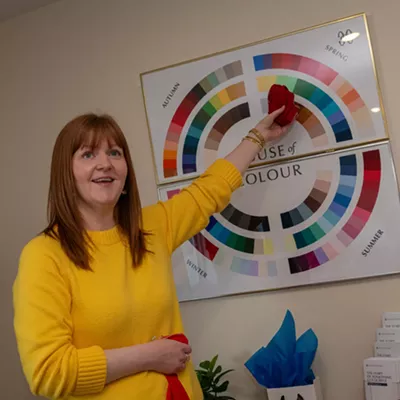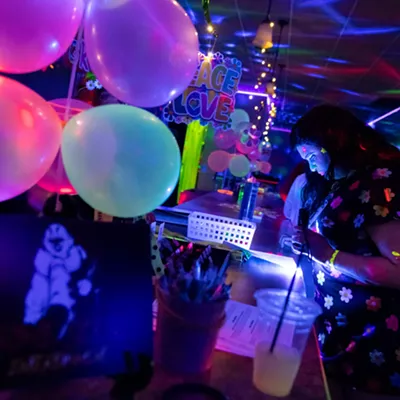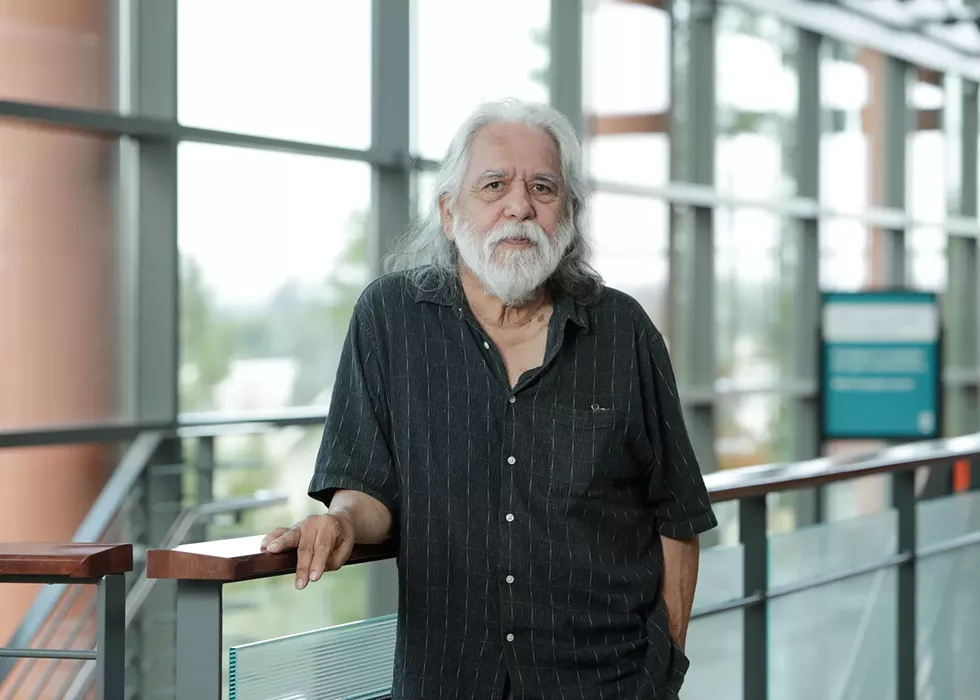
Whether dangling from a bracelet or hung around the neck like an amulet, charms suggest inherent power, even if it's subtle. They're also emblematic of other things — people, places, events. The word "charm" can suggest playful beguilement, but also being tricked out of something valuable, such as one's land or possessions.
So which is it for sx̌ʷyʔiɬp (Colville) artist Joe Feddersen, who calls his flattened, fused glass symbols "charms?"
"Everybody's interpretation is valid," says Feddersen, quoting Skagit elder Vi Taqwseblu Hilbert, one of many friends and mentors who have shaped his lifetime journey with art. In the many interviews Feddersen has given over his 45-year career, he often mentions something else about Hilbert: She called Feddersen a storyteller.
Feddersen's charms tell the story of his seven decades living and working in Omak and the greater Northwest. His work conveys its elk, fish and trees, but also its airplanes, traffic signs and high-voltage transmission towers, which Feddersen calls "energy thieves" for the way in which the land of his ancestors was taken and exploited without consent.
To display his charms, Feddersen often suspends the transparent images on columns of clear filament to form a glass curtain measuring upwards of 10 feet long.

One such work, "Charmed (Bestiary)," which was last shown at the venerable Smithsonian American Art Museum's 2023 Renwick Invitational, will be a prominent — and likely popular — feature of Feddersen's three-month exhibition at the Northwest Museum of Art and Culture.
Titled "Earth, Water, Sky," the Feddersen retrospective exhibition opens Sept. 28 and showcases 120 works from the prolific artist's range of media: printmaking, woven baskets, ceramics and glass. A hardcover book, Joe Feddersen: Earth, Water, Sky, accompanies the exhibition, which also features three videos produced by Spokane-based and Indigenous-owned Counting Coup Media.
Like many of Feddersen's works, "Charmed (Bestiary)" can be read multiple ways. Bestiaries are allegorical tales of real and mythical animals popularized in the Middle Ages, while Feddersen's charms suggest the entire spectrum and history of ideographic language, from Indigenous petroglyphs and Egyptian hieroglyphics to modern logos. At the same time, the charms' cast shadows dance on the wall like an ever-changing animation.
Sept. 28-Jan. 25, 2025
Open Tue-Sun from 10 am-5 pm, $8-$12
Northwest Museum of Arts & Culture, 2316 W. First Ave.
northwestmuseum.org, 509-456-3931
So which is it?
"I think about how people read the horoscopes, and I like that horoscopes are vague enough, that it applies to a lot of people in a lot of different ways," Feddersen says.
"And all of the readings are right, you know? And that's how, in a sense, kind of a way of looking at things that I like to have is that ambiguity in there to open it up."
Even though there is a lot of ambiguity in how one might perceive Feddersen's work, there are some constants: his heritage and the land.
Born in 1953 in Omak, Washington, a portion of which lies on the westernmost edge of the Colville Indian Reservation, Feddersen describes his heritage as Arrow Lakes and Okanagan.
Feddersen is also a "self-proclaimed landscape artist," says Rachel Allen (Nimiipuu/Nez Perce), who co-curated the exhibition and co-wrote its companion publication with heather ahtone (Choctaw/Chickasaw Nation), the director of curatorial affairs at the First Americans Museum in Oklahoma City.
"We're positioning him as an American landscape artist because that's really important to have that conversation about that, even though Native art history and his Native history in general predates [traditional landscape painting] by a long shot," Allen says.
Allen, who's completing her doctorate in the history of art program at University of Delaware, offers this context: Oftentimes people envision a landscape artist in terms of 19th century Western art movements like the Hudson River School, whose artists Thomas Moran and Albert Bierstadt depicted the land as pristine, untouched, sublime.
Those landscapes, however, "don't have the connectedness that you have from a Native perspective, where when Joe looks at the land, he sees all of the layers of people and animals and ancestors walking over this land for millennia," Allen says.
"It's not a picture window on the world," she continues. "It's the complex layers of the land that we're on, and those layers go into the water, and they go into the skies, and those places are active and storied as well. [Joe] sees the petroglyphs that his ancestors did thousands of years ago. He sees the tire tracks that were made yesterday. He sees it all, and he looks at it through these layers."
When Joe looks at the land, he sees all of the layers of people and animals and ancestors walking over this land for millennia.
Indeed, two words that come to mind when viewing Feddersen's work are layers and connectedness.
As the MAC retrospective illustrates, Feddersen employs related motifs across many media, as well as layering them within each media, from his charms and glass vessels, to his baskets and prints. The shapes from the glass charms, for example, were part of the evolution of a series of prints also called "Charmed," which had a less-than-charming origin.
After tracing some of the charms onto prints he'd made in a process called monoprinting or single-edition printing, rather like a drawing, Feddersen stepped back to consider the results.
"I made like around 10 or so and I hated them, so I just put them in a drawer," he says. "And then I brought them out later, and I thought, 'I don't have anything to lose,'" so he spray-painted them.
The juxtaposed layering of images that referenced his heritage with contemporary media and mark making was a hit with art collector Jordan D. Schnitzer. If the name sounds familiar, Schnitzer and his family's foundation are the namesake of the Jordan Schnitzer Museum of Art at Washington State University, and one of more than a dozen individuals or organizations to loan works to the MAC for the retrospective.
"He bought all of them," Feddersen says.
Look for similar motifs in Feddersen's baskets, a term he uses for both the textile forms he weaves using traditional materials like linen, wool, hide and fabric, as well as in his blown-glass vessels. Combined, the two artforms offer a study in Feddersen's complementary ways of working: solitary and contemplative versus physical and equipment-driven, yet collaborative.
For example, after learning about 215 unmarked graves believed to be of Indigenous children that were discovered three years ago at Kamloops Indian Residential School in British Columbia, Feddersen had much to contemplate and began a new series of baskets (not included in the retrospective).
"My grandparents survived that school," Feddersen says. "They never talked about it."
The artist responded to the horror of the Kamloops graves by weaving a basket with 215 skulls incorporated into the stitchery, one for each child.
"It's kind of about understanding [what happened] because when you make something, you're not supposed to be bitter or angry. And making the basket was like a labyrinth because it goes in a spiral," says Feddersen, explaining that when walking in a spiral or labyrinth, you contemplate things, or maybe recite prayers.
"And making this basket was like that because you're in the spiral and you're weaving your way out and you're working on the subject matter. So it's contemplative and you think about what you're doing, and you want it to be in a good way."
In contrast, the glass vessels Feddersen learned to make after earning a Master of Fine Arts at the University of Wisconsin-Madison in 1989 require a collaborative approach, are much more physical, and necessitate the use of a lot of equipment.
In that way, says Feddersen, glassblowing is more akin to printmaking, which he first explored while attending Wenatchee Valley College. There, art instructors Robert Graves and Daryl Dietrich encouraged him to pursue art and became lifelong friends.
Feddersen says printmaking is central to his practice. He went on to major in it and earned a Bachelor of Fine Arts from the University of Washington in 1983.
"That's where I feel more fluid," he explains. "If I'm doing a proposal for anything, I'll do monoprints as my drawings."
Printmaking might be the artform with which Feddersen feels most flexible and has certainly done the longest, but it wasn't his first love.
"In the 1970s, my high school teacher liked rendering and didn't like anything else," he says.
So Feddersen turned to H. H. Hall's ceramic studio in Omak to explore his artistic inclinations.
Although Feddersen was born into a family of makers — he has a vivid memory of his mother drawing at the family table in the early morning — the media that resonated most with him was clay.
"Ceramics was my first love," he says.
His rarely exhibited, low-fired clay "Canoe Journey" sculptures are a highlight of the MAC retrospective. Coyote, a ubiquitous figure in many Indigenous stories, is the main character in the tableaux, and the artist says many of the sculptures have additional stories attached to them.
One "Canoe Journey" sculpture depicts a scene from when a Maori artist visiting Feddersen's studio lost the basket he was working on during a sojourn down the Mississippi River.
Another sculpture relates to artist Jaune Quick-to-See Smith, whose heritage is French-Cree, Shoshone and Salish, and who was part of a cadre of Indigenous artists whose friendship and mentorship have been integral during Feddersen's 40-year art journey.
"I told her I was doing these canoes, and she sent me a picture of one of her drawings of the canoes," Feddersen says.
He then made a sculpture incorporating Quick-to-See-Smith's drawing.
"I think it's of a rabbit with a skull," he says.
There's another layer to the "Canoe Journey" sculptures, one that loops back to the unifying theme in Feddersen's work of connectedness.
"Canoe journeys are social events, not commercial events," he explains. "So they're about community building, and it's both going on the journey and watching the ceremonies on the shore that I think I have more of a whimsical attitude towards the whole thing."
At nearly every bend in the river of his journey, Feddersen encountered a guide. Some, like Preston Singletary, taught him specific techniques, like "translating his baskets into glass," exhibition curator Allen says.
It's kind of about understanding [what happened] because when you make something, you're not supposed to be bitter or angry.
"Elizabeth Woody, the former poet laureate of Oregon, taught him how to basket weave," she says.
Woody, an enrolled member of the Confederated Tribes of Warm Springs, Oregon, of Yakama Nation descent, is also one of five contributing writers to the exhibition's publication, Joe Feddersen: Earth, Water, Sky.
The late artist and former curator of the National Museum of the American Indian, Truman Lowe (Ho-Chunk), also had a big influence on Feddersen, who studied under Lowe at the University of Wisconsin-Madison. Lowe was instrumental in getting Feddersen to branch out into different media.
Lowe told Feddersen that he wasn't just a printmaker, Allen says, but rather an artist, and he encouraged him to "try things that match the idea or match the impulse," versus being limited to a specific medium.
"And so he tried glass casting, he tried digital media, he tried lots of things," says Allen, whose obvious enthusiasm for Feddersen's work originates from her own experiences in search of her forebears.
Some of Feddersen's mentors influenced both his artmaking and his approach to life, like Glen Alps, his printmaking professor at UW.
"We used to sit and talk about how he would see the world and how he would perceive things much more than how to print things," says Feddersen, who became a mentor himself when he joined the art teaching staff of Evergreen State College in 1989.
Later, when Feddersen was in the midst of what would be a 20-year teaching career, he invited Alps to speak to his students at Evergreen.
"And he spoke for two and a half hours on breathing naturally," Feddersen says. "What he really was talking about was letting the artwork flow from you." ♦

